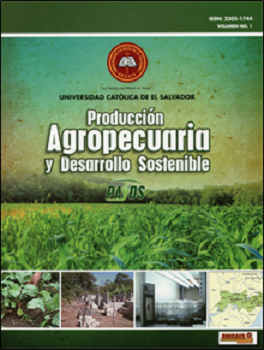Development of two protocols of in vitro micropropagation of musaceae guineo manzano (musa AA) and date (musa AAB), of commercial and nostalgic value for El Salvador, for its later incorporation in two productive plots
DOI:
https://doi.org/10.5377/payds.v1i0.3957Keywords:
micropropagation, nostalgic musaceae, Murashige & Skoog means, BenzylaminopurineAbstract
This research is based on the importance of the Musaceae datil banana (AA) and apple banana (AAB) in the Salvadoran diet; as well as the economic and social importance of this fruit to the country. Toe purpose of the research was to develop an efficient protocol to reproduce this species in a lab and then deliver them to small farmers from two co-ops. Toe process was composed of five phases: establishment, multiplication, development, rooting and acclimatization of species. Toe experiment was carried out under controlled conditions in the lab, in which sword field sprouts were used as seed source. Toe corms were cut and washed with Tween 80; each sample was disinfected with pure bleach (sodium hypochlorite 5.25%).The corms extracted from meristems were placed in a nutrient culture medium MS (Murashige & Skoog, 1962), containing 5.0 mg/1 of cytokinin BAP (benzylaminopurine) and a pH of 5.8. In both cases, the response of the samples was the same as in vitro conditions.
At the beginning, the apple banana responded better to the multiplication; the oxidation largely limited to obtain a greater number of explants of this variety. This phenomenon was controlled applyingl25 mg/1 of ascorbic acid to the culture. At the end of the ten multiplication cycles, 2,500 plants were obtained from each species, which were rooted, acclimatized to be given to small farmers from two co-ops
Downloads
1557
Downloads
Published
How to Cite
Issue
Section
License
© Producción Agropecuaria y Desarrollo Sostenible
Copyright of the articles is transferred to the journal Producción Agropecuaria y Desarrollo Sostenible
As a user of this journal, you have:
- Open access to consult the information contained in this issue
- Permission to copy, distribute, display, perform or combine past practices in the use of information, provided it is strictly non-profit.
This journal uses a CC BY-NC license





